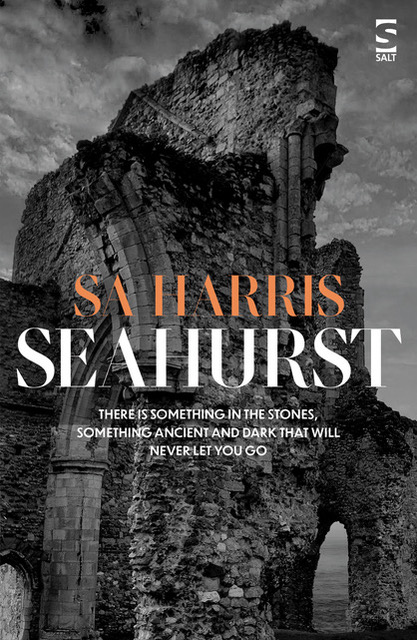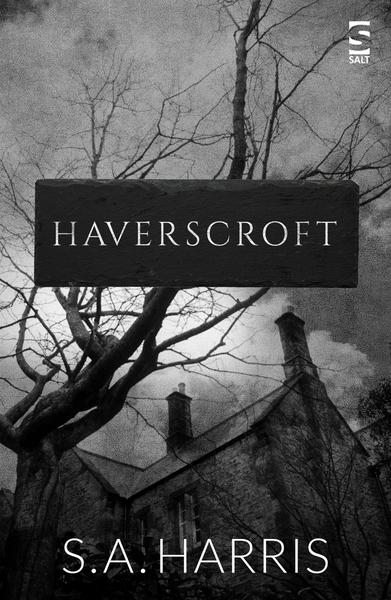

1. At what point do you think someone should call themselves a writer?
I called myself a writer after I enrolled on a creative writing course. The first class was one I would never forget. Before that, I had not written fiction since I left school, although many stories played out in my mind. The tutor went around the table asking what we did and what writing experience we had. There was a journalist with most a novel already written, a copy-editor and two poets with published collections. I felt completely out of my comfort zone and wondered if I had bitten off more than I could chew, but we all have to start somewhere. It does not need to be anything significant, such as a poetry collection or a novel. If you write, you are a writer.
2. Do you here from your readers much? What do they say?
I love hearing from readers and was surprised how many got in touch when Haverscroft was published. There’s nothing quite like someone having read your book and enjoyed it. Readers have very individual reactions to the same story and often interpret it or the characters’ reactions in a way I would never have anticipated. It initially felt strange when readers spoke about my characters as if they were real people, although it was also lovely to chat about Kate, Mrs Cooper and Mrs Havers in that way. I do the same when discussing other writers’ books or TV/films, so I should not have been surprised. The Keeling family pet, Riley, was often mentioned by concerned readers, but then the UK is a nation of dog lovers!
3. Have you ever travelled as research for your book?
Haverscroft and Seahurst are set in Suffolk where I was born. Haverscroft’s setting is entirely fictional, a village based on the numerous Suffolk villages I have known since childhood. Seahurst is set on the Suffolk coast in an area I know well, but despite that, I made a few trips to the coast whilst writing Seahurst. It’s helpful to walk around the area even when the settings in the novel are fictional. There is always something new to experience, a sight or smell, or a cliff riddled with holes and tiny sand martins zooming in and out of them as I saw one summer.
4. How do you celebrate when you finish your book?
It’s difficult to say when a book is finished as there are so many stages in writing. Some writers consider the book complete when it’s sent out on submission or to go across to the writer’s agent. There will be more editing, though, to do after that, running up to publication. For me, the time to celebrate is when the first draft is complete. Finding the entire length of the story is the hardest part of writing for me, so I celebrate when that is done. Usually, I will have a few weeks away from the manuscript to enjoy doing other things and let it all mull over in my mind before I get back to it and write the second draft. A book is properly finished when it heads off to the printers. By then, my attention is usually taken up by my battle with the early stages of the next book!
5. How do you develop your plot and characters?
The plot is something I actively think about, and I will make piles of notes and fill a cork-board with post-it notes. It takes a long time for the main plot to emerge fully and for the subplots to weave through it cohesively. The first draft may have a dozen or more plot holes and issues, which gradually get dealt with later.
My characters grow far more organically. If I try to force them to be a certain person, or act in a particular way, they kick off badly, and the story feels clunky and thin. It takes a long time to get to know all the characters well, but once I do, I’m in the zone and writing the story is the best thing.
6. How long did it take you to write Seahurst?
The climatic scene was in my mind for several years. I was writing Haverscroft when I first thought of it, and was desperate to follow the scene further and start writing it, but I only properly focus on one novel at a time. It had to wait, which allowed the image and idea to develop, and threads of what became Seahurst also began to spin out from that first scene. The initial plotting and early drafts of Seahurst were written in 2016/17. There was then a long hiatus as Haverscroft found a publisher, and I dealt with edits and then all the publicity and events that come with a book being published. Eventually, I returned to Seahurst before the first lockdown.
7. How do you use social media as an author?
Haverscroft’s publisher asked if I would help promote the book by being active on social media, particularly Twitter. At that time I had an account that I posted on once or twice a year. Salt Publishing gave me a few handy tips, and I have gone from there. I started using Instagram as well and generally post about books and also my love of cakes. I enjoy chatting with people on social media about all sorts of things. It’s hard to spread the word about books, and social media is essential to help do that.
8. What is the most difficult part of your writing process?
Without a doubt, writing a first draft. The writing is flat and thin as I do not know the characters well enough during those early months. The plot is still bubbling away, so scenes often need more direction, and the tension is slack. Once I have battled to the end of the first draft, I find it far more straightforward. I really get going with the second and subsequent drafts which are usually a pleasure to write.
9. What is the most valuable piece of advise you’ve been given about writing?
I was struggling mid-way through the first draft of Haverscroft when a writing tutor pointed out only I could write my book. She suggested I break down the text into more manageable size chunks, which enabled me to keep chipping away, piling up the words until the draft was complete. I often thought about that as I moved on to write the first draft of Seahurst, and I remember that advice now as write the first draft of book three.
10. What book (or books) are you currently reading?
I’m a book club member, and we are currently reading Jojo Moyes’s The Ship of Brides. We each take turns in choosing a book to read which results in a wide range of genres and writers being read. I’ve recently also been asked to read advanced copies of other writers’ books as they are running up to publication. I’ve just finished reading Ruby Speechley’s, Gone, and I raced through Polly Crosby’s Vita and the Birds.
Twitter @salharris1
Instagram sallyharrisauthor
Facebook S.A.Harris